Fine Tuning BFS Speed and Plyo Workouts

How to Organize Plyometrics and Speed Workouts
By Kim Goss
Originally Published 2010
It’s been said that “All things being equal, the strongest athlete will always win.” True, and that’s why coaches place so much emphasis on the BFS Set-Rep weight training program, not just in the off-season but in-season as well. But just focusing on the weights, such as powerlifters and bodybuilders often do, is not enough.
BFS is called the “Total Program” because it has balance. Although a 400-pound bench press is impressive, the time it would take an athlete to develop the strength for such an accomplishment would take away from developing other athletic qualities – qualities such as speed, agility, flexibility, jumping ability, and muscular endurance. Let’s look at what the research says, for example, about jumping ability.
Many studies have been done that show that plyometrics combined with weight training produces superior results than weight training alone can produce. In a paper published in the Journal of Applied Sports Science Research in 1992, researchers conducted a six-week study on the effects of squatting and plyometrics on the vertical jump. The group that performed just the squat increased their vertical jump by an average of 1.3 inches – pretty good. When plyometrics was combined with squatting, however, the increase was 4.2 inches! With such results, it’s obvious that box jumping should be a part of every athlete’s workout.
But just as important as training to develop all these qualities with specific training methods such as box jumps is knowing how to organize them in a workout.
Ideally, year-round, athletes should devote two full days every week to activities that will help them run faster and jump higher. Usually, Tuesday and Thursday are the best days, as during the off-season three days a week should be devoted to weight training, and it’s usually best to have one day of rest between workouts.

The following are the major types of activities that should be performed on Tuesday and Thursday.
Dot Drill. Always begin with the BFS Dot Drill. In addition to increasing body temperature and respiration, it stimulates the nervous system to react quickly – much more so than a simple jog will accomplish. Jumping rope can be used as a substitute for the dot drill, but the dot drill is superior, as it works the ankles dynamically and through a greater range of motion.
Sprint Technique. At BFS, we always emphasize perfect form to maximize athletic performance and also to avoid injury. Muscles are often pulled not simply because of lack of flexibility but due to a lack of coordination between the hamstrings and quadriceps. Also, there are many technique issues to consider, such as the 8-point technique system. Because running is such a complex activity, it should always be performed early in a workout.
Bounding. Bounding is a set of specific running drills that emphasize specific aspects of running, such as leg extensions or knee lifts. From a practical perspective, usually, these drills are performed immediately after sprint training.
Box Jumps. Box jumping is a key to developing jumping ability and explosiveness for what coaches often refer to as “first-step quickness.” A plyometric box jumping program progresses from easy to more difficult drills, and a range of box sizes should be available to handle a variety of athletes. For example, young athletes and middle school athletes should start with the BFS readiness boxes, which are not as tall as the standard boxes. Also, you must perform box jumps early in a workout because if your legs are fatigued, you will not be able to recruit the fast-twitch muscle fibers that are trained with this type of activity. Beginning Plyo videos
Sled Work. We recommend two types of sleds: those that you push and which therefore emphasize the start by focusing on hip and leg extension; and those that you pull. Because these are extremely fatiguing, they should be performed at the end of a workout.
Medicine Ball Training. Medicine balls are versatile training tools that develop many athletic qualities. For example, medicine ball throws can develop the abdominal muscles and upper body power.
Stretching. Stretching should be performed every day, and it’s best to stretch at the end of training sessions to keep the muscles loose. Also, because so many young athletes have issues with flexibility, some coaches like to have their athletes perform stretching immediately after the dot drill.
Now let’s put these all together. Here are two sample workouts that, ideally, could be performed on Tuesday and Thursday:
Obviously, there are many ways to make these workouts more specific to a sport. For example, a football lineman or fullback may want to perform sled pulling twice a week, and a discus thrower would benefit from more medicine ball work. Also, due to limitations in space or equipment, often every athlete will not be able to perform these workouts exactly as prescribed. A coach may have to have one group of athletes perform box jumping while the other performs bounding exercises, after which they will switch.
As always, your best resource is BFS. Consider attending one of our Camps and Clinics or Certifications. Our clinicians are available to help you design a program that is best for you!
Maximize Your Workout Time, Dot Drill For Efficient, Effective Warm-Ups
